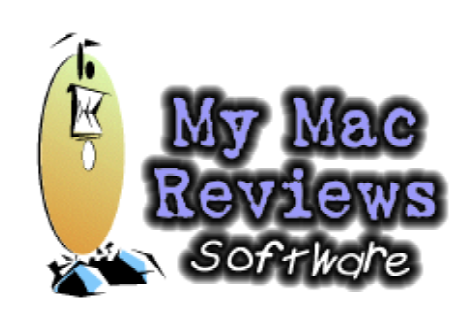Freeway 2.0
SoftPress Systems
Price: $299
Creating websites should be a fun and creative experience. One should be able to express themselves without the hassle of “working at it.” The web page designer should be free to create whatever in the manner that they choose. Well, as unlikely as it may seem, I think I have found such an avenue: Freeway.
Freeway 2.0, from SoftPress Systems, captured my attention when reading Mac Tech magazine. Here was a web design tool for the Macintosh that I hadn’t heard about. So I started my investigation, read the description, read the comments and everything about Freeway sounded too good to be true. Thank goodness some things are as good as they sound.
Freeway is a dream come true. Here is a website publishing tool that has features galore with the interface of desktop publishing. It supports the output of GIF, JPEG, and PNG graphics. It complies to several HTML standards: 3.2, 3.2+CSS, and 4.0. It also has precision placement of graphic and text content, and even creates frames, tables, and anchors. It has a semi-WYSIWYG interface that almost makes me forget I’m busily producing HTML pages. Although Freeway doesn’t allow access to the HTML, it nevertheless produces very clean and readable HTML code.
Freeway separates the web design from the HTML code, and is a viable tool for either the novice or expert web page designer. It’s geared mostly toward desktop publishers, but offers an intuitive interface that even a novice could navigate. As I mentioned earlier, there is no way to directly edit the HTML code from within Freeway. Still, I feel Freeway has succeeded in producing an environment for the graphic designer to be productive in web design.
In the beginning
There was BBEdit Lite. Then Alpha, and then Netscape Composer. Next came GoLive CyberStudio Personal Edition. Now, at last, I have found Freeway 2.0. I am amazed at how easy it has been for me to incorporate some of the more complex HTML elements without too much hassle using this excellent software. Freeway has actually made ME feel creative! (I’m an engineer by trade.
Freeway for the Absolute Beginner? — Probably Not
As easy as Freeway is to use, it may not be the right tool for an absolute beginner. Even with its excellent documentation of more than 350 pages of clear, concise information, Freeway’s interface is based on desktop publishing. This may cause somewhat of a steep learning curve for those that are new to page layout software. But if you have any experience using a layout-type software package such as AppleWorks, Claris Home Page, Netscape Composer, Canvas, or PowerPoint, to name a few, then using Freeway will be a breeze.
Putting it all Together
Let me see, I mentioned the desktop publishing-like interface. With that, Freeway has implemented pixel precision placement of elements. This would include graphics, tables, and HTML which can be placed exactly where you want them by the use of palette elements that hold the specific content.
Multiple Masters
Masters? Yes, masters. In creating a new project, Freeway has a feature where you can specify a master sheet, i.e., a template, that can be used throughout the website, thereby allowing every page to have the same look. Freeway also supports the use of multiple masters within one website, therefore giving the web page designer enormous expressive power and flexibility. This could be a real timesaver for those with large websites.
A Call to Action
For the truly complex and cutting edge effects, Freeway supports what they call Actions. As most of Freeway is setup for graphically creating a website, the use of Actions allow for scripting and custom HTML. Actions use scripting (JavaScript) and an XML-like language. Although I did not use any actions in my site, they do have predefined libraries that implement such things as mouse rollovers, GIF animation, and timed redirects. But you can also create your own for any specialized effect that you may want.
A Few Notables
With all the functionality of Freeway, there is not enough room in this review to cover everything, but I do want to mention some of its other valuable aspects:
• Output of text as either HTML or GIF
• Support of Dynamic HTML
• Multiple Graphic Format Support
• Input: GIF, PNG, JPEG, TIFF, PICT, EPS, BMP
• Output: GIF, PNG, JPEG
• HTML 4.0
• Cascading Style Sheets
• Tables
• Framesets
• JavaScript
• FTP uploading only changed items
What’s Missing — Suggestions for the Next Release
Nested numbered lists. I sent Freeway tech support a question about nested numbered list and the reply said they are working on implementing this feature.
HTML interaction – Even if it’s a menu item to call an external editor such as BBEdit or Alpha.
URL database – Freeway keeps a list of the URLs used in the project. I would like to see a database list that I can just link to without have to remember or lookup somewhere else.
System Requirements:
PowerPC or 68K Macintosh or Mac OS-compatible computer running Mac OS 7.5.1 or later, 20MB free disk space. Free RAM: 8MB for 68K computers, 9MB for PowerPC (I recommend at least 16MB).
Summary
I really like Freeway 2.0. In the tradition of the Macintosh, it has allowed me go beyond my own creativity (which is not much). I would highly recommend Freeway 2.0 to novices and experts alike. Freeway combines the intuitive interface of desktop publishing with the power of a website design/maintenance tool. Its support of advanced HTML and customization should appeal to webmasters of today. I tip my hat to SoftPress Systems for creating a tool that helps even a engineer to be creative.
•Anthony Wilson•
Websites mentioned:



Leave a Reply
You must be logged in to post a comment.